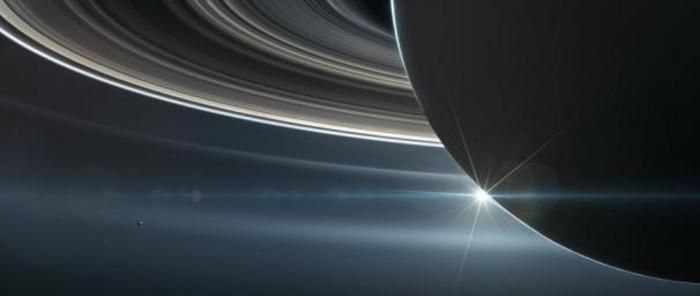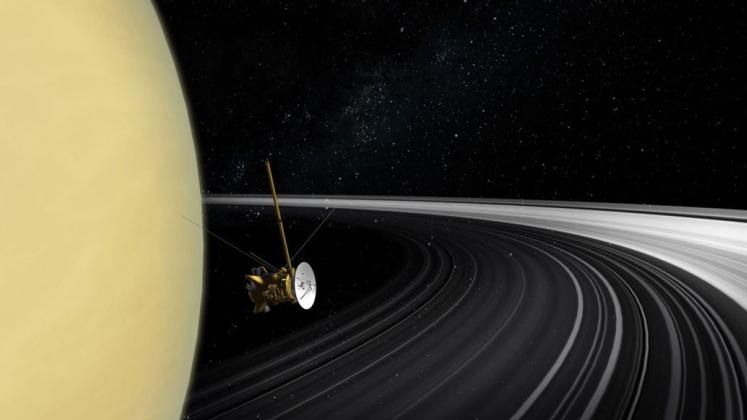“Solar Eclipses Captured by Deactivated Cassini Probe Illuminate Saturn’s Ring System”
Certainly, among the marvels of the solar system, Saturn’s enchanting rings emerge as a beloved spectacle. In 1997, with a determined focus, the Cassini spacecraft embarked on a seven-year odyssey to Saturn, undertaking the ambitious mission of conducting an unprecedented survey of the planet, its moons, and, notably, its captivating rings.
Before its grand finale in 2017, when Cassini descended into Saturn’s atmosphere, the spacecraft meticulously traversed the space between the planet and its rings, diligently collecting an extensive array of data. Leveraging this data, acquired with the Langmuir Probe aboard the spacecraft, planetary scientists have successfully gauged the optical depth of Saturn’s rings, employing an unconventional method tied to solar eclipses observed during the mission.
To comprehend this, it is essential to grasp that the optical depth of a substance is intricately linked to the distance light can traverse through that material before being absorbed or scattered. Additionally, optical depth correlates with the transparency of an object.

Ph.D. student George Xystouris from the University of Lancaster identified a potential correlation between “solar eclipse” occurrences observed by the spacecraft—when the probe entered shadows behind Saturn or its rings—and the optical depth of the rings. If this hypothesis holds true, the transparency of Saturn’s rings would be discernible directly from the data collected by Cassini. The study authors explain, “We utilize all accessible solar eclipses observed from Cassini, occurring when the spacecraft enters the shadow of either Saturn or its rings.”

While the Langmuir Probe onboard Cassini was initially designed to measure cold plasma—a combination of low-energy ions and electrons—in Saturn’s magnetosphere, an additional intriguing aspect emerged. Due to the metallic composition of the probe, when Cassini was exposed to sunlight, the incoming rays provided sufficient energy to induce the photoelectric effect, causing the probe’s material to release electrons.
Consequently, the probe not only detected electrons from Saturn’s magnetosphere but also captured electrons generated by sunlight interacting with its metallic surface. As the probe traversed in and out of the shadow cast by the planet and its rings, it recorded notable fluctuations in electron data intensity.
Recognizing the correlation between these variations and the amount of sunlight passing through each of Saturn’s rings, Xystouris realized he could effectively reverse-calculate the optical depth of the rings. “Ultimately, leveraging the material properties of the Langmuir Probe and considering the intensity of sunlight in Saturn’s vicinity, we successfully computed the change in the number of photoelectrons for each ring, thereby determining the optical depth of Saturn’s rings,” explained Xystouris in a statement.

“We used an instrument that is mainly used for plasma measurements to measure a planetary feature, which is a unique use of the Langmuir Probe, and our results agreed with studies that used high-resolution imagers to measure the transparency of the rings,” he added. While the main rings of Saturn extend out to 140,000 kilometers (roughly 87,000 miles) from the planet, the team found, the maximum thickness of the rings only reaches one kilometer.
The iconic rings are also set to disappear from view from Earth by 2025 as they tilt back towards us in the next phase of Saturn’s 29-year orbit. But don’t worry, they won’t be absent from keen stargazers telescopes for too long. They should only be gone for a few months.
This article is republished from SpaceCom under a Creative Commons license. Read the original article.
Do not forget to share your opinion with us to provide you with the best posts !




0 Comments